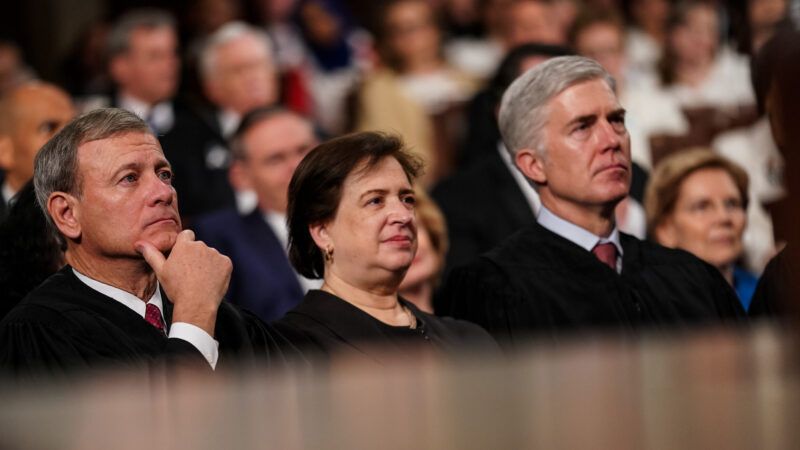Shooting a Fleeing Suspect Who Escapes Still Triggers the Fourth Amendment, Says SCOTUS
"The application of physical force to the body with the intent to restrain is a seizure, even if the person does not submit and is not subdued."

Fourth Amendment advocates won big today at the U.S. Supreme Court, which held 5–3 that when the police shoot a fleeing suspect, it still counts as a Fourth Amendment seizure even if the bullets don't stop the suspect. "The application of physical force to the body with the intent to restrain is a seizure," declared Chief Justice John Roberts, "even if the person does not submit and is not subdued."
The case of Torres v. Madrid began in the early morning hours of July 15, 2014, with Roxanne Torres sitting inside her car in her apartment building's parking lot while several New Mexico State Police officers were parked nearby in an unmarked car. The officers, who were wearing dark tactical vests with police markings, were there to arrest somebody else. They claimed they only approached Torres because they thought she was acting suspiciously. According to Torres, she just saw individuals with guns crowding her car. Thinking she was about to be carjacked, Torres hit the gas. The officers shot her twice as she fled. Torres only learned that it was the police who shot her when she was arrested a day later at the hospital.
Torres sued, arguing that the officers' use of excessive force violated the Fourth Amendment's prohibition against unreasonable seizure. The officers countered by claiming that no seizure occurred since Torres was not actually stopped during the encounter.
"The question in this case," wrote Chief Justice John Roberts, who was joined by Justices Stephen Breyer, Sonia Sotomayor, Elena Kagan, and Brett Kavanaugh, "is whether a seizure occurs when an officer shoots someone who temporarily eludes capture after the shooting. The answer is yes: The application of physical force to the body of a person with intent to restrain is a seizure, even if the force does not succeed in subduing the person."
Notably, Justice Neil Gorsuch, who Fourth Amendment advocates often see as an ally, dissented in favor of the officers. In Gorsuch's view, which was joined by Justices Clarence Thomas and Samuel Alito (Justice Amy Coney Barrett took no part in the case), "'seizing' something doesn't mean touching it; it means taking possession."
The chief justice rejected that view, pointing to a 1991 decision written by the late Justice Antonin Scalia. In California v. Hodari D., Scalia said that "the mere grasping or application of physical force with lawful authority, whether or not it succeeded in subduing the arrestee," qualified as a seizure for Fourth Amendment purposes.
"At the end of the day," Roberts wrote in Torres v. Madrid, "we simply agree with the analysis of the common law of arrest and its relation to the Fourth Amendment set forth thirty years ago by Justice Scalia, joined by six of his colleagues, rather than the competing view urged by the dissent today."


Show Comments (33)